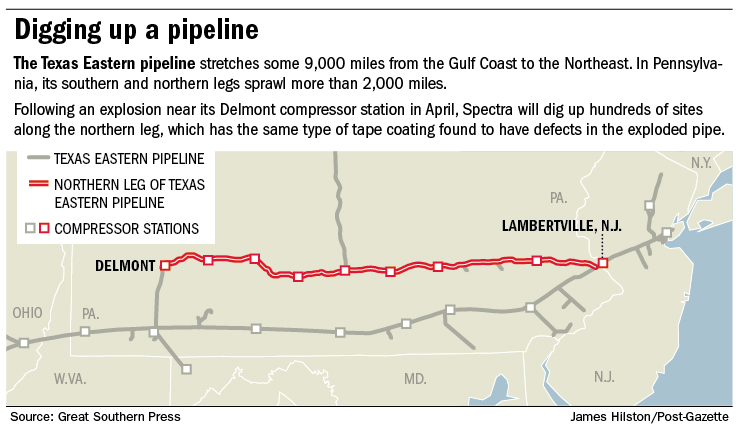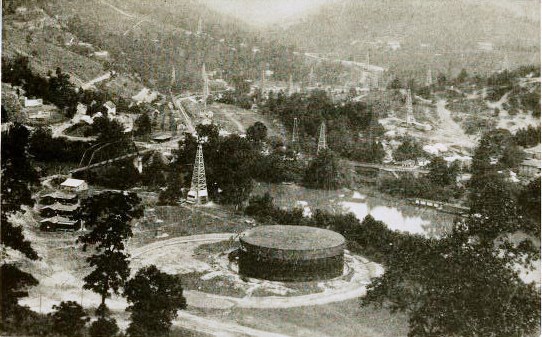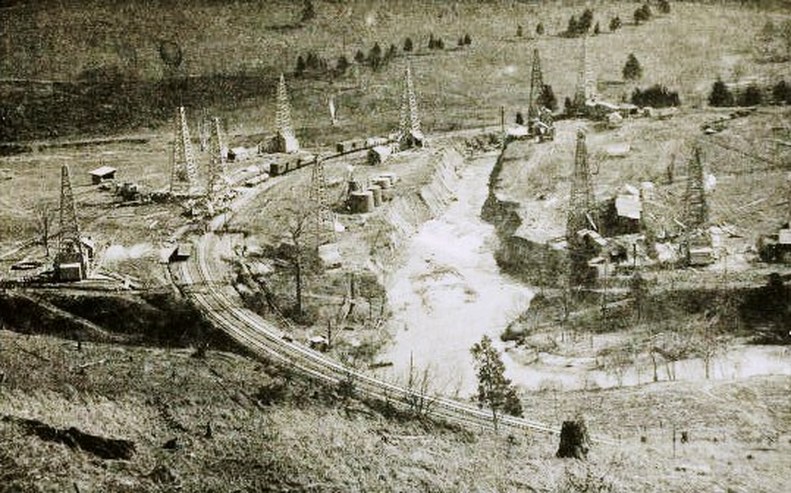The DUCs are back in the news. Not that they ever left. Oil companies are starting to bring their Drilled but UnCompleted wells online. The reason they are bringing them online is that oil prices have stayed above $40/bbl for about a month. The money invested in those wells is sunk cost at this point, and it won’t take as much to complete them as it will to drill new wells, so it’s cheap product for the companies that own them. Wood Mackenzie’s Alex Beeker thinks that the number of DUCs will drop by 400 next month. Considering that there were about 1700 in March, that’s a big drop.
Two more natural gas fired power plants are being planned in Pennsylvania. Link is to Marcellus Drilling News, where we get a lot of our oil and gas news.
Eclipse Resources drilled a well with a lateral of 18,500 feet. That’s 3.5 miles! That’s a long well. They drilled it in 18 days! That’s fast.
Tim Maverick with Seeking Alpha thinks that Mexico’s demand for natural gas is what’s going to keep the U.S. natural gas industry alive.
A study has shown what natural gas has done for the manufacturing industry in the United States. We always knew that itw as a good thing, but now we have actual numbers.
The United States is still the worlds largest producer of petroleum and natural gas hydrocarbons according to the US EIA. Anyone wondering why we have an oversupply of either only needs to take a quick look at the first chart in the article. Go USA! OK, so we actually kind of shot ourselves in the foot. Not just kind of, but dead on from point blank range. But if you’re one for tradition it should make you feel good to know that the oil and gas industry has been doing exactly this since its inception. Produce as much as you can while the demand and price are high. Overproduce while the price drops. Get out of the market or go bankrupt when the price drops so low you can’t make money. Everybody left continue to produce until the market stabilizes. When prices start to climb get back in the game and start producing again. Lather, rinse, repeat.
In the same vein of thought, gas storage numbers were greater last week than they were last year for the same week. However, they were below the five year average. The article suggests that the slightly lower numbers are because of restrictions on production more than anything. That makes sense. We have fewer rigs running than at any time since we started keeping track of that, and production is actually starting to drop off across the US. I expect production to continue to drop off for the rest of the summer and fall. If prices rise above $2.50/MCF we might see more rigs fired up, but we might not. It’s possible we could hit storage limits this fall and if we do producers won’t have much incentive to drill new wells.
This article at The Week, a British site, suggests that breaking through the $50/bbl price will be a boost psychologically to the price of oil. Now that it has done that, people actually think that it will stay up there for a while. The article includes a pretty good overview discussion of the price of oil and the economy, and is worth a few minutes to read.
OPEC met again, and didn’t accomplish much. What they did accomplish was to agree to a new secretary general, Sanusi Barkindo of Nigeria. Previously, the secretary general was Abdulla al-Badri. Saudi Arabia and Iran had pushed hard for their own replacement candidates over the last few years, resulting in al-Badri being automatically extended. It’s interesting that the new secretary general is from Nigeria, a country that is having serious troubles with civil war and rebels blowing up the country’s pipelines. OPEC also was able to agree to admit a new member, the country of Gabon.
Now that prices are at $50/bbl and kind of seem to be stable around that number, everyone is wondering whether shale drilling is going to pick back up. This article over at oilprice.com doesn’t have answers, but analyzes the current situation well.
Natural gas prices have hit and exceeded, but not stayed consistently above, $2.50/MCF.
Here’s someone who thinks that $50/bbl oil isn’t going to last. He starts out talking about stock market factors which, to my mind, aren’t as important as production/demand. But then he gets into the oversupply, pointing out that there are a whole bunch of tankers sitting offshore full of oil just waiting for the price of oil to go a little higher. Seems like a bad move to me, but that’s not my line of business. Regardless, those tankers are going to have to unload at some point, and they hold a good chunk of the 1 billion to 3 billion extra barrels of oil that have been floating around for a while (no pun intended). I’ve personally been mystified by the increase in oil prices. I haven’t seen what I thought was enough of a cut in production to warrant the significant increase in price. I wouldn’t be surprised if the price of oil did take a dive for a while. I’ll be more confident that oil prices are going to stay up when American frackers start setting idled rigs back up.
RBN Energy is doing a two-part series about LNG and its effect on the natural gas market. Since most of what we produce here in West Virginia is natural gas and RBN Energy does very well-researched work, this is highly recommended reading.
A Tennessee man, Pat Riley, has coordinated a coast-to-coast road rally to show off the possibility of CNG. Apparently you can travel coast-to-coast on CNG because there are enough fueling stations to do so.
OilPrice.com points out that when oil and gas prices start to rise (which they have been recently) it might be hard for oil and gas companies to find the skilled workers they need to start production back up in a timely manner. We’ve mentioned this possible problem in previous State of Oil and Gas posts. If that’s the case, we may be in for a roller coaster ride of oil and gas prices in coming years.
This article at oilpro.com says that DUCs won’t get completed in large numbers until oil hits $100/bbl because the companies won’t be able to finance the fracking of the DUCs. We might be staring down the beginning of really high oil prices. In oil and gas, worldwide supply and demand are the main factors, but financing and money drives everything else.
The Saudi strategy of producing enough oil for anyone that wants to buy from them makes it harder for alternative energy sources to get funding.





